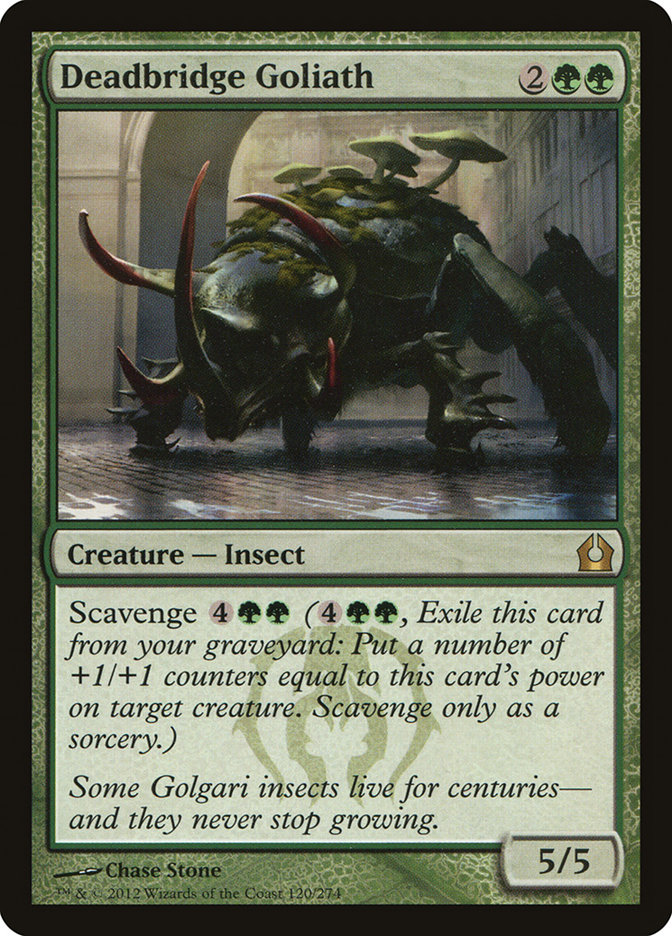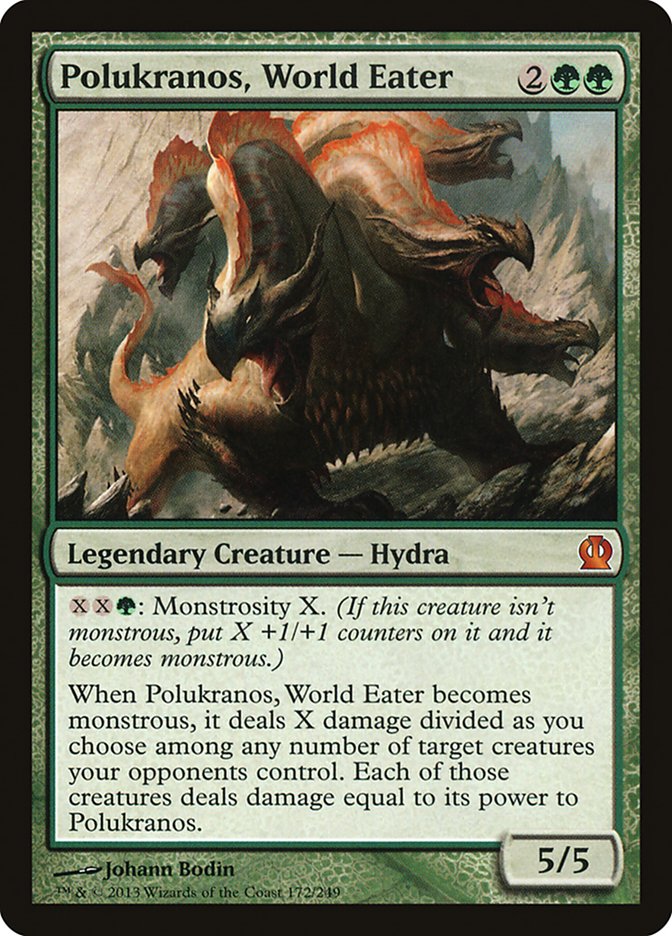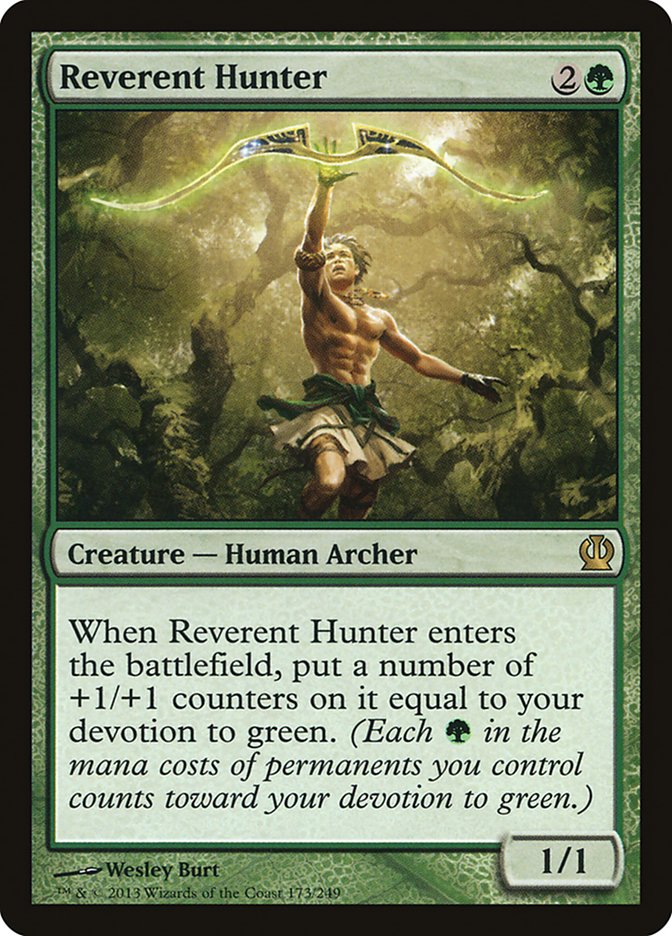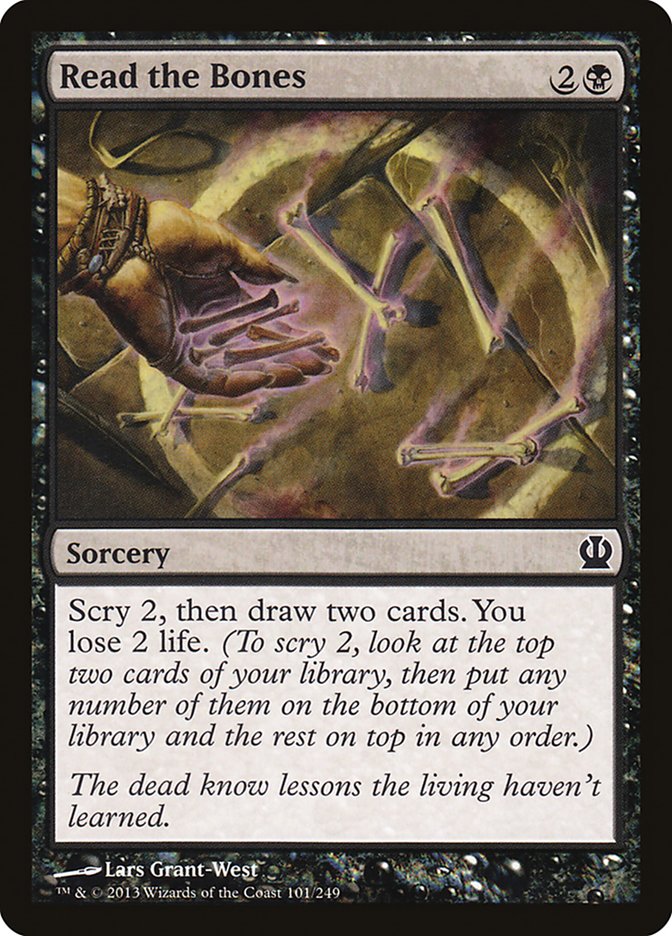We’re in a very strange time for Standard, one that happens quite often. For the weeks leading into a Standard Pro Tour, but after the release of the latest set, competitive Standard faces a somewhat interesting situation where many of the people who are directly responsible for the creation of what are usually the best decks have no incentives to show their work, even in large tournaments.
Or, put more simply, players at the Pro Tour have no reason to let the cat out of the bag early.
I know that, for example, even though I’m not playing at the Pro Tour, because I’m working with others who are, I’m not sharing some of my thoughts on a particular build of one archetype, simply because I don’t want to hurt my friends’ chances at the Big Show. If you’re not sure what archetype I’m slightly biting my tongue on, I’ll give you a hint: I am working with so many ideas, I feel like Ben Franklin with his kite…
This isn’t to say that the decks that are out there from our regular stars and contributors that aren’t worth paying attention to. Case in point, Owen Turtenwald Mono-Red Aggro list from a few weeks ago, which, to me, can be pointed to as a fair example of a “test deck” for anyone serious about Standard.
Creatures (30)
- 2 Goblin Shortcutter
- 4 Chandra's Phoenix
- 4 Gore-House Chainwalker
- 4 Rakdos Cackler
- 4 Burning-Tree Emissary
- 4 Firefist Striker
- 4 Foundry Street Denizen
- 4 Firedrinker Satyr
Lands (22)
Spells (8)

Now, this deck is a totally reasonable deck, and, played properly, a very dangerous weapon to wield. That being said, I would be very surprised if Team StarCityGames sleeved this one up. It’s not at all that the deck is bad – I hope I’ve impressed on you that I feel it’s quite worthy to be considered – but rather that the is a need for edges in a competitive field. When a Pro Tour is on the line, you don’t drop all of your secrets a few weeks beforehand.
If someone were to play Owen’s list at the PT or at any other event, the good news is that it is a rational choice. More good news: the deck is a real beast. The bad news is that it’s had a target painted on it. Caveat emptor.
So, with all of that being said, what on earth is going on with Standard?
Understanding the Last Two SCG Opens
One of the most important things to pay attention to from the Top 8 of StarCityGames.com Standard Open in Worcester and the Top 8 of StarCityGames.com Standard Open in Cleveland is this:
Worcester had four Sphinx’s Revelations decks in the Top 8.
Cleveland had none. Cleveland, in quite the opposite fashion from Worcester, was dominated by midrange decks, whether they were more pure midrange or midrange aggro decks.
One of the conclusions I came to in last week’s article, was that Midrange was being squeezed out of Standard by Mono-Red Aggro and UW/x Control decks, essentially that it was incredibly difficult to find something that existed in the middle. If you then take Cleveland in mind, you might say that the rise of midrange at that event shows that there is a path in the middle.
I’m not so sure.
One of the things I like to do during the coverage of StarCityGames.com Opens and Invitationals is to make sure that I have decks with me. If I’m feeling very ambitious, I’ll have several decks for each format. But, when it comes to traveling to these events, carrying a ton of decks really does take up a lot of luggage space, and so I try to limit myself to only a few decks, hopefully one of each major format (Standard, Modern, Legacy).
It was the same at this event. As often as I could, I got out into the room and played Magic against anyone who was interested. One thing I heard many times at the event was that a lot of the top competitors who might have otherwise been there weren’t. In the Top 8, at least two of the players also commented about that. I usually don’t hear comments like that at Opens.
This isn’t to say that there weren’t a lot of talented players in the room, as well. But when enough local players are saying it about the event, I tend to believe it. And as one of them said as he prepared for his first Top 8 match, control is good, but it takes the right kind of pilot to be able to pull off wins with it.
A classic example during the Open came in one round in the middle of the event, where a UW Control player needlessly cast a Sphinx’s Revelation while not under any real pressure and with a high life total. The premature casting of the Revelation certainly seemed like it was responsible for the loss in that game, and ultimately the match.
Unless it is overwhelmingly good, control is hard. Sometimes very hard.
Now, control is good. The point of “the squeeze”, as I referred to it last week, is that making a deck that can navigate against those control decks and red decks can be quite difficult. I still definitely think that this is the case.
This isn’t to say that Red isn’t also very hard to play. In one match, I discussed a specific game with Dan Musser about his final game against Yiran Lin, playing Junk vs. Mono-Red. On turn two, Lin cast a Burning-Tree Emissary into a Firefist Striker; I would have instead chained into Lightning Strike to remove Musser’s Elvish Mystic. In talking about it with Dan, we figured out that the Lightning Strike play would have resulted in a certain 10-12 damage for Lin.
In a room that doesn’t actually have “the squeeze” playing on it, this gives the midrange lists room to thrive, and thrive they did. The best way to think about metagames is to think about them like ecologies. If we remove a natural predator, what do we get? The flourishing of species that might not otherwise have stood much of a chance to thrive. In Cleveland, I think we saw just that.
I’m just going to look at a few lists from Cleveland that rose to the top, and I think might have what it takes to stay in the fight.
Cleveland Decks
Let’s start with a personal favorite of mine:
Creatures (22)
- 2 Scavenging Ooze
- 4 Loxodon Smiter
- 3 Obzedat, Ghost Council
- 2 Sin Collector
- 4 Voice of Resurgence
- 4 Elvish Mystic
- 3 Sylvan Caryatid
Planeswalkers (2)
Lands (24)
Spells (12)

Yes, I’m biased towards Junk. The original Pro Tour Junk is one of my creations, and I’m a big fan of decks that employ that strategy.
Notice I said “strategy” as opposed to “color combo”. As [author name="Patrick Chapin"]Patrick Chapin[/author] alluded to in his article this week, Junk might be a name we’ve taken to giving to B/G/W, but as he said “true Junk” is something else entirely.
Back when it was first created, the idea of Junk was to be a midrange-aggro deck, placing down threats and largely dominating the board while having access to answers to potential problems from an opponent. Here is a version of the deck from 2000; I gave it to two players for a 200-player PTQ in Indianapolis, they played the only copies of the list, 75-cards exactly the same, and they met in the finals.
PT Junk – 1st & 2nd Place – Indianapolis PTQ 2000
4 Duress
3 Skyshroud Elite
2 Powder Keg
3 Cursed Scroll
4 Phyrexian Negator
4 Blastoderm
4 River Boa
3 Seal of Cleansing
3 Demonic Consultation
3 Swords to Plowshares
4 Tithe
3 Mox Diamond
2 Grasslands
4 Wasteland
4 Treetop Village
4 Scrubland[/author]“][author name="Scrubland"]Scrubland[/author]
3 Bayou
3 Savannah
Sideboard:
3 Massacre
3 Perish
3 Ebony Charm
3 Wax // Wane
3 Choke
What I like about Dan Musser list is that it basically takes the same approach to the game that the original design of PT Junk did. Musser’s list actually cares about killing the opponent!
Most of the Junk lists we’ve seen for a while are very much more like The Rock in terms of their actual strategy. Much in the same way that Junk has become shorthand for B/G/W, The Rock has become shorthand for B/G. But the theory of Sol Malka’s The Rock and his Millions was always one of midrange-control, rather than midrange-aggro. Sol also wanted to dominate the board, but his deck was much more concerned with gaining card advantage and winning the grind. In many ways, the Modern deck “Junk” is certainly more of a The Rock deck, as is Modern Jund.
With Musser’s list, we see a return to that “true” version of the archetype. While I’m not excited about Sylvan Caryatid from an abstract “deck purity” perspective, deckbuilding is not about purity; you do what you have to do to make a deck work.
One of my absolute favorite things about Musser’s list is the mana. I’ve discussed before how the Block Constructed format that precedes a Standard rotation often is the basis for New Standard formats. In that Block, running 12 Ravnica/Return to Ravnica duals plus six Guildgates was the clear consensus for mana-building control decks, often with a little bonus help of some form or other. What seems to be coming clear is that mana so aggressively “good” won’t cut it in the face of the aggressive decks. Musser used a very impressive eight basic lands and only four Temple of Silence without dipping into any of the three Guildgates to help out his colors.
To me, this kind of choice is very smart, and I think it serves as a lesson:
Lesson One: Midrange decks and control decks probably need to respect red even more than they have been, and up their basic land counts (respecting Pain at the cost of Access, as I wrote about a few weeks ago.)
While the metagame might dictate small changes here or there, I actually like Dan Musser list so much, I wouldn’t recommend any changes other than to fit the expectations of a specific tournament.
Creatures (36)
- 3 Scavenging Ooze
- 2 Deadbridge Goliath
- 4 Burning-Tree Emissary
- 4 Experiment One
- 4 Elvish Mystic
- 4 Kalonian Tusker
- 2 Kalonian Hydra
- 2 Polukranos, World Eater
- 4 Reverent Hunter
- 3 Nylea, God of the Hunt
- 4 Boon Satyr
Lands (24)

Good ol’ Stompy…
Now here is a deck that is an incredible break-out deck from the StarCityGames.com Standard Open in Cleveland. Another version of this list, piloted by Chris Renner, made the Top 4 very convincingly, and yet another was near the top for much of the day before falling. After watching the first one play, it had me on board with the idea that something real was going on. Apparently this deck has been making the rounds on Magic League, but I wasn’t able to track down its source. (If you know it, please share in the comments.)
While at initial glance one might think that the numbers in this deck are fairly random, after watching it play I actually feel quite comfortable with them. The deck is almost all four-ofs, but it does have the following exceptions:
2 Deadbridge Goliath
2 Kalonian Hydra
2 Polukranos, World Eater
3 Scavenging Ooze
3 Nylea, God of the Hunt
I actually really like all of these numbers. Deadbridge Goliath/Polukranos, World Eater form a de-facto “four-of” between the two of them. In an ideal world, I think you’d actually want all four Polukranos, but the Legendary aspect of the card is not inconsequential, and so you need to accept the reality of a limit and fill in the blanks with a near-analog. Deadbridge Goliath can do the trick.


Scavenging Ooze and Nylea, God of the Hunt have something similar in common as well: they both have diminishing returns. Ooze can do a lot of work, but not if another Ooze has already done the work. Nylea, much like Polukranos, suffers from the Legendary limitation, and so makes for a difficult four-of (though that didn’t stop Chris Renner). I was actually surprised at just how impressive Nylea, God of the Hunt was, and so upping it up from two to three seems reasonable to me; four seems a little greedy.
As for Kalonian Hydra, I could imagine running a third one, but for the sake of the mana curve I don’t think I’d recommend it. Here is the curve:
| 1: | XXXXXXXX |
| 2: | XXXXXXXXXXX |
| 3: | XXXXXXXX |
| 4: | XXXXXXX |
| 5: | XXX |
(Note: I counted one of the Boon Satyrs as both a “3” and a “5”.)
With a curve like this, there is actually a great deal of game that comes in early. The latter use creatures also have huge potential impacts on the game; the way that Boon Satyr kept demolishing games was incredibly impressive.
One of the best things about this deck to me was Reverent Hunter. Now, I had a late-night playtest session with Midwest Magic aficionados Brian Kowal, Adam Jansen, and Ronny Serio, and the Hunter impressed us enough that we even started looking at other devotion cards for inspiration*, but my Reverent Hunter deck was weak enough overall that we moved on. This one actually makes full use of the card, and backs it up with some real pipe-swingers.

The board is really quite beautiful, and I definitely prefer Clair Bigelow’s board to the one played by Chris Renner (even though he might be onto something with Mistcutter Hydra) basically for the inclusion of Hunt the Hunter, a card that I think is going to continue to be impressive should midrange-based green decks continue to be in the mix. But particularly impressive was Garruk, Caller of Beast, which basically just destroyed any matchup that tried to go long. I guess it is just hard to compete with Garruk when it comes to bringing the party.
Cedric mentioned that this deck might be able to run a second Nykthos, Shrine to Nyx, and I’m inclined to agree that it is possible. Particularly with Garruk, Caller of Beasts, it is pretty disgusting. If you do decide to make that change, I’d cut a Forest; 19 Forests is usually sufficient to get to double green easily, and you also have Elvish Mystic to help out.
Lesson 2: If you’re going to go with an aggressive midrange strategy, make sure you have both the mana curve and a sufficient amount of tricky, versatile spells that you don’t just fall over against a more focused controlling or aggressive strategy.
Creatures (13)
Planeswalkers (2)
Lands (26)
Spells (19)

Andrew Morrow’s Midrange-Orzhov Control list is basically chock-full of all of the good cards that you’d expect to see in a Black/White list. For the most part, his deck looks like a laundry list of good stuff in the colors.
 More than the previous lists, there are some things I don’t like. In my initial testing, Read the Bones was definitely underperforming for me. In addition, in talking with other groups it became clear that the consensus conclusion was simple: Read the Bones should just be more stuff.
More than the previous lists, there are some things I don’t like. In my initial testing, Read the Bones was definitely underperforming for me. In addition, in talking with other groups it became clear that the consensus conclusion was simple: Read the Bones should just be more stuff.
A part of the problem with Read the Bones is that it didn’t do enough against more controlling decks and was too dangerous against more aggressive decks. Ultimately, just having more action and/or lands seems to be the better call. In addition, I definitely think that Morrow’s mana is just not ambitious enough. I’m sure that there is very little need for much in the way of Guildgates, and I also think the deck could probably support a few Mutavaults.
Elspeth, on the other hand, very much impressed me all weekend. I had been working on a very different B/W list, and I think I’m likely to include it in that version. In addition, my friend Collin La Fleur had sent me a very interesting Gray Merchant list that I started working with. I gave it to my friend Jonathon Brostoff, and he finished second place in the Illinois State Championship this weekend with a version that included cards he played simply because he couldn’t get the whole list together.
Here is my new version of that list.
Creatures (18)
- 4 Desecration Demon
- 2 Obzedat, Ghost Council
- 4 Nightveil Specter
- 4 Blood Baron of Vizkopa
- 4 Gray Merchant of Asphodel
Planeswalkers (1)
Lands (25)
Spells (16)

The little splash of blue is a quite brilliant idea of Collin’s, I think. Not only does it let the deck have white-based lands that can cast the Nightveil Specter, but also it actually can put the fear of countermagic into an opponent.
Jonathan was incredibly impressed with a lot of the cards; the version he played was an earlier version with Blood Scrivener, which was sadly, underwhelming, but some of the other unusual cards like Nightveil Specter and Liliana of the Dark Realms both managed to perform very well, providing the much need combo of threat-plus-answer. I still somewhat want to add in a Transguild Promenade to make the Specter just a touch better, but that is probably just absurdly greedy. If this list wasn’t running Nightveil Specter, I’d find room for two more Mutavault, but that also feels a little greedy – I feel like 21 primary black sources is sufficient to support four Nightveil Specter, but if I drop below that, I’m definitely running a risk.
Overall, Morrow’s list and the one that I worked on in helping La Fleur both have the same idea in mind: staking out the role of midrange control by trying to fit relevant, powerful cards into it. To me, the one thing I don’t like about Morrow’s list is I think it takes the wrong risks, playing Read the Bones and Thoughtseize main when I think that aggressive decks are actually enemy number one. In Gray Midrange Control, the choice of a single Underworld Connections is largely there to help power up the Gray Merchants and supply a controllable amount of card advantage, not losing life if you don’t need to. Personally, I think that is the way to go. After watching Morrow get crushed by the Stompy deck piloted by Chris Renner and seeing how ineffectual the life-loss cards were in the face of true aggro, and how painful the Guildgates were, culling back some of those aspects just needs to be the reality for how you build these decks if you ask me.
Lesson 3: Fight against aggro first,then worry about control.
Hopefully, I’ve given you some good food for thought for whatever your upcoming Standard event is. I’m actually struggling between playing Mono-red in the Standard and the bizarro brew inspired by my playtest conversation with those old Midwesterners I mentioned above, Blue Elemental Blast*. In Legacy, I’m much more open-minded, but I wouldn’t be surprised if I played my least-favorite color in Magic. Any guess what that color is?
Until next week,
* Bonus Brew:
This deck is still a work in progress, but I think it has a lot of potential.
Creatures (23)
- 4 Judge's Familiar
- 4 Frostburn Weird
- 4 Nightveil Specter
- 4 Tidebinder Mage
- 3 Thassa, God of the Sea
- 4 Master of Waves
Lands (25)
Spells (12)
Sideboard

It’s quite a brew. Mostly, this deck is taking the thoughts that I’d had in my endless quest to recreate the deck George (a Grand Prix winning deck from the late ’90s), mixing it with the Blue Elemental Blast conversation I had with Kowal, Jansen, and Serio, and taking encouragement from the rumor that someone made Top 32 with a similar list in Cleveland. I’m pretty sure I won’t be playing it in Milwaukee this weekend, but I’m still tinkering with it.
If you’re interested about what I think is my best brew ever, I wrote about it on my Facebook page; I hope you let me know what you think of it.
